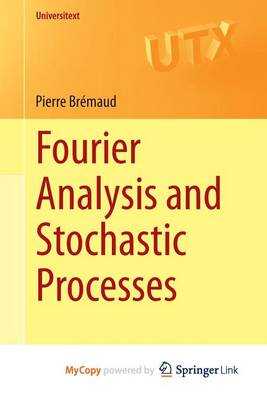Universitext
2 total works
This work is unique as it provides a uniform treatment of the Fourier theories of functions (Fourier transforms and series, z-transforms), finite measures (characteristic functions, convergence in distribution), and stochastic processes (including arma series and point processes).
It emphasises the links between these three themes. The chapter on the Fourier theory of point processes and signals structured by point processes is a novel addition to the literature on Fourier analysis of stochastic processes. It also connects the theory with recent lines of research such as biological spike signals and ultrawide-band communications.
Although the treatment is mathematically rigorous, the convivial style makes the book accessible to a large audience. In particular, it will be interesting to anyone working in electrical engineering and communications, biology (point process signals) and econometrics (arma models). Each chapter has an exercise section, which makes Fourier Analysis and Stochastic Processes suitable for a graduate course in applied mathematics, as well as for self-study.
The ultimate objective of this book is to present a panoramic view of the main stochastic processes which have an impact on applications, with complete proofs and exercises. Random processes play a central role in the applied sciences, including operations research, insurance, finance, biology, physics, computer and communications networks, and signal processing.
In order to help the reader to reach a level of technical autonomy sufficient to understand the presented models, this book includes a reasonable dose of probability theory. On the other hand, the study of stochastic processes gives an opportunity to apply the main theoretical results of probability theory beyond classroom examples and in a non-trivial manner that makes this discipline look more attractive to the applications-oriented student.
One can distinguish three parts of this book. The first four chapters are about probability theory, Chapters 5 to 8 concern random sequences, or discrete-time stochastic processes, and the rest of the book focuses on stochastic processes and point processes. There is sufficient modularity for the instructor or the self-teaching reader to design a course or a study program adapted to her/his specific needs. This book is in a large measure self-contained.

